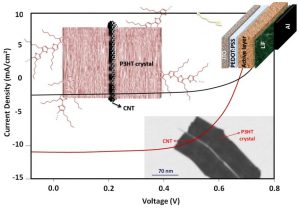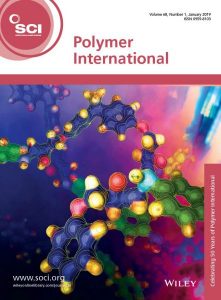
Organic photovoltaics (OPVs) are promising for future electricity generation, as they offer a cheaper option to traditional silicon solar panels. OPVs convert solar energy to electrical energy and are based on carbon materials, rather than silicon. An additional benefit of OPVs is their flexibility. The key challenge in OPV research, however, is improving their efficiency to be comparable with silicon cells. Over the last year, there has been major progress in this area.
A system of “butterflies”—or carbon nanotubes (CNTs) grafted with semiconducting polymers—can be used to achieve an excellent increase in OPV efficiency. These structures can increase the power conversion efficiency beyond 5%, through crystallization of poly(3-hexylthiophene) chains onto grafted CNTs with regioregular P3HT chains.
Interested in this topic? Check out more articles in Polymer International here—which celebrates 50 Years of publication in 2019!


















